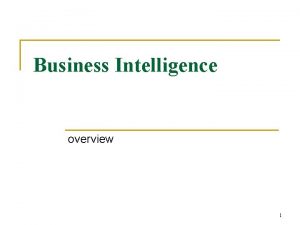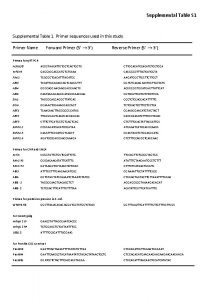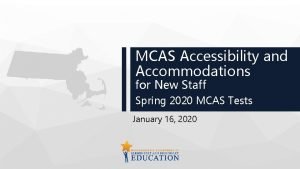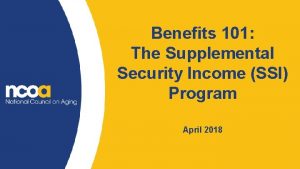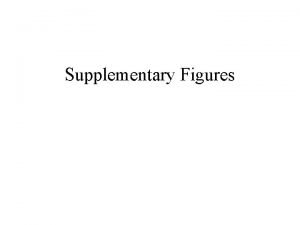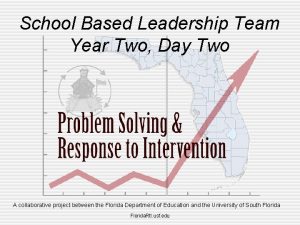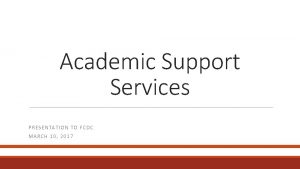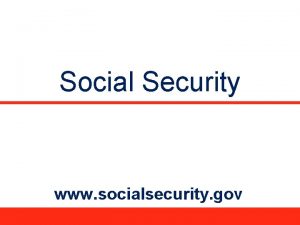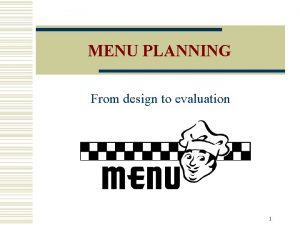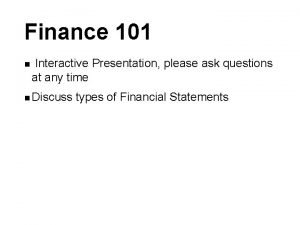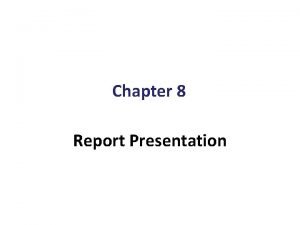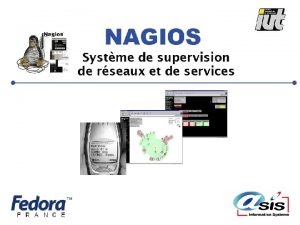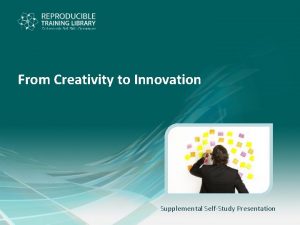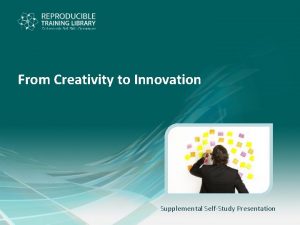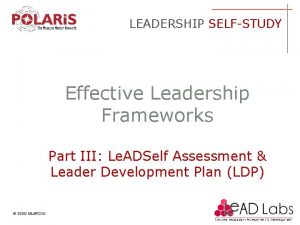Leadership 101 Supplemental SelfStudy Presentation Leadership 101 Overview























































- Slides: 55

Leadership 101 Supplemental Self-Study Presentation

Leadership 101 Overview

Leadership 101 Introduction After you’ve completed this course, you’ll be able to identify key characteristics of leaders. You’ll know how to build trust and confidence with employees, and you’ll avoid behaviors that undermine leadership. You’ll be more skilled at promoting teamwork and esprit de corps, and you’ll be prepared to act decisively. And last, but not least, you’ll be able to demonstrate leadership in a crisis.

Leadership 101 Module 1: Leadership Lessons

Leadership 101 Who Was Your Favorite Teacher? Who was your favorite teacher? • What qualities or characteristics did he or she have? • What behaviors did he or she demonstrate? • What results did he or she achieve? Many of the traits and behaviors of effective teachers translate to being an effective leader in the working world. “If your actions inspire others to dream more, learn more, do more and become more, you are a leader. ” —John Quincy Adams, 6 th U. S. President

Leadership 101 Leadership Defined Leadership is positively influencing others to accomplish a specific goal. Leadership is a fuzzy concept—you know it when you see it, but it can be difficult to pinpoint the characteristics and behaviors that will guarantee someone will be a leader. Effective leaders exhibit the following traits. They: • Have and share a vision • Pursue excellence • Communicate effectively • Are trustworthy • Build confidence • Show enthusiasm • Serve others We’ll look at each of these traits in detail.

Leadership 101 Have and Share a Vision Leaders have and share a vision. Vision is the ability to imagine the organization’s future—and inspire others to work toward achieving that future. Here are some examples: • The Girl Scout vision statement is “Girl Scouting builds girls of courage, confidence, and character, who make the world a better place. ” • The Cirque du Soleil vision statement is “Invoke the imagination, provoke the senses and evoke the emotions of people around the world. ” • A local grocer’s vision is “We help families live happier and healthier lives by providing the freshest, tastiest and most nutritious local produce: From local farms to your table in under 24 hours. ”

Leadership 101 Create Your Vision Answer the following questions to create an inspiring vision. The first question gets at the “what” while the second question gets at the “how” because effective leaders are concerned with both the ends (the “what”) and the means (the “how”). • What is your winning idea? • What do customers and other stakeholders value most about how your organization will achieve your winning idea? • After considering these questions, refine these ideas into a succinct, inspiring statement.

Leadership 101 Translate Vision into Everyday Activities Vision matters because it guides (or it should) the ends and the means of your organization: What you want to accomplish and how you want to accomplish it. Your vision should guide not only your activities, but those of your employees too. To connect your vision to their daily activities, involve them in answering the following questions: • Where should we be? • When should we be there? • Where will we concentrate our efforts? • How will we allocate our resources? Make certain your vision maintains its relevance by periodically assessing ongoing tasks and responsibilities to determine if they support the vision, by looking for new ideas and opportunities that further the vision, and by ignoring day-to-day “noise” and staying focused on the goal.

Leadership 101 Test Your Knowledge Review what you’ve just learned by completing this quiz. Read each vision statement and rephrase it so that it inspires others. When you’re ready, click the statement to reveal the suggested answer. “To make household cleaners from natural products that smell good, work great, and make “To be the number one leader in cleaning products. ” people’s homes lovelier. ” “To provide high quality legal services to our clients. ” To negotiate “win-win” deals that allow our clients to feel secure and pursue their dreams. ”

Leadership 101 Pursue Excellence Effective teachers pursue excellence, and so do effective leaders. They serve as role models for ongoing self-improvement. Set high expectations for yourself, and identify ways to go the extra mile for employees and customers. Integrate the following behaviors into your daily activities: • Do it right the first time. • Look for opportunities for improvement, however small. • Seek new ways of doing things. • Be open to other suggestions. • Be willing to take risks. • Solicit feedback from employees, peers, customers and clients in order to keep improving.

Leadership 101 Set Expectations Another way to pursue excellence is to set expectations. People are motivated by challenges when they believe they can succeed, and they remain motivated when they can see the results of their efforts. So, set high, but attainable, targets for performance. • Make targets clear, specific, and understood by all. • Set targets that are directly related to employees’ daily tasks. Consider these categories: Time Cost Satisfaction Financial Time: How long does it take to produce the product or service? Cost: How much money does it take to make the product or service? Satisfaction: What will customers experience with the product or service? What will employees experience in creating or providing the product or service? Financial: What is the bottom line benefit generated by producing or providing the product or service?

Leadership 101 Communicate Effectively Effective leaders are effective communicators. If your skills are lacking, take training on public speaking or making presentations. There are many ingredients of effective leadership communication: • Show passion. • Voice ideas and opinions in a clear, logical, and convincing manner. • Use plain language; eliminate jargon and euphemisms. • Make it memorable by sharing a story, personal anecdote, or analogy. • Check for understanding with your listeners. • Use all available channels to communicate: presentations, meetings, email, intranet, blog, etc.

Leadership 101 Develop a Story You can improve your communication skills by developing a story. Stories are a powerful communication tool. They help make your message memorable and meaningful. The best stories are generally those that are surprising or inspiring. Follow these tips to make the most of your stories: • Know the point you want to convey. • Make others the hero. • Take a risk; share a personal story that makes you vulnerable. • Focus on something you have learned and can share with others. • End with a call to action. • Keep it short.

Leadership 101 Be Trustworthy The next leadership trait is to be trustworthy. Your favorite teacher was undoubtedly someone you could trust. Likewise, a leader who positively influences others is trustworthy. The origins of trust are: • Being dependable: being able to predict how a leader will behave and knowing you can count on the leader for support • Being proficient: Being able to deliver expected results – doing the job you are asked to do • Showing compassion: identifying with another’s experience – being able to put yourself in someone else’s shoes and view the situation from his or her perspective Note: Psychologists identify four elements to establishing trust which serve as the basis of the three we have identified here. iii

Leadership 101 Trust Deposits and Withdrawals Your behaviors either build trust or erode it. Concentrate on demonstrating behaviors that build up your trust account and eliminate behaviors that withdraw from your trust account. Behaviors that Build Trust Deposits Behaviors that Withdraw Trust • Keep your promises. • Blame others. • Communicate directly and openly. • Shoot the messenger. • Be honest about problems. • Equate mistakes with failure. • Don’t circulate rumors. • • Praise more than you criticize. Overextend yourself and your followers so you can’t meet commitments. • Practice what you preach. …Avoid these behaviors!

Leadership 101 Trust Assessment Read each pair of statements and decide what point on the line best reflects your team or organization’s current level of trust (i. e. closer to the statement on the left or right). Power and control are in the hands of a few individuals. Employees at all levels feel they have ownership in the organization. “Turf wars” among teams or departments are common. Teams and departments across the organization work collaboratively. Employees hold back their thoughts and feelings. Employees express their views openly, even when they are not in agreement with their boss or leader. Employees and leaders blame others and don’t take responsibility for their mistakes. Employees, and especially leaders, are open about their mistakes and learn from them. Employees feel micromanaged. Employees are given freedom and flexibility to do their jobs. Employees don’t feel valued or appreciated or understood in the organization. Employees feel valued, appreciated, and cared for in the organization. Overall, employees don’t trust each other in the organization. Overall, employees do trust each other in the organization.

Leadership 101 Build Confidence in Your Employees The next leadership trait is to build confidence in your employees. This is an area where you can really take a page from effective teachers—they always build the confidence of their students. Be dedicated to supporting, encouraging, and mentoring employees to reach their full potential. • Provide opportunities for employees to succeed. Include a variety of challenges, not just a single focus. • Build on success. Celebrate victories, no matter how small. • Make it safe to fail. Treat mistakes as learning opportunities. • Don’t compare employees. Find each employee’s strengths and weaknesses; build on his or her strengths, and minimize his or her weaknesses.

Leadership 101 Be Enthusiastic The next leadership trait is to be enthusiastic. There are many benefits of being enthusiastic: • Others naturally follow you • People deliver more; they are more likely to go the extra step • You create energy, both physical and emotional • You become “contagious; ” you become a role model that others want to learn from • You build a reputation as a person who inspires others to overcome challenges and succeed

Leadership 101 How to Be More Enthusiastic Let’s discuss some ideas for how to be more enthusiastic. • Cultivate a more positive attitude by examining where you’re already enthusiastic and trying to do more of that. • Spend time with enthusiastic people. • View problems as challenges: focus on what you can do, not what you can’t. • Smile! Sometimes, attitude follows behavior—in others words, sometimes you have to act enthusiastic to feel enthusiastic. If you are enthusiastic, authentic, inspirational to others and have a reputation for getting results, then personal success will follow.

Leadership 101 Serve Others The last leadership trait is to serve others. Serving others sounds very touchy-feely, but you will ultimately achieve more success when you adopt an attitude of serving others, which emphasizes trust, collaboration, and the ethical use of power. Behaviors that signal you’re serving others: • Listening: not just hearing, but understanding • Responding: this is how people know they were heard • Asking: find out what people are thinking and feeling • Engaging: taking initiative to develop relationships with employees • Caring: treating every person with respect, compassion, and kindness

Leadership 101 Test Your Knowledge Take a few moments to complete this quiz to review what you’ve just learned. Identify the leadership trait indicated by the following examples: TRUSTWORTHY Keep your promises. EXCELLENCE Do it right the first time. COMMUNICATE Use memorable stories. ENTHUSIASM Focus on what you can do, not what you can’t. VISION Inspire others to work toward a common goal. CONFIDENCE Make it safe to fail. Treat every person with respect and SERVE OTHERS compassion.

Leadership 101 Module 2: Behaviors That Undermine Leadership

Leadership 101 Teachers Gone Wrong Just as there are traits that make you an effective leader, there are behaviors that can make you ineffective. To get you thinking about behaviors that undermine leadership, recall a teacher who wasn’t very good. • What didn’t you like about the teacher? • What was the result? • How did you do in their class?

Leadership 101 Lack of Transparency Lack of transparency is one of the main complaints of employees about poor leaders. Whether the motive is an innocent desire to protect employees, or a less innocent desire to control the work environment, the outcome is the same: employees have a negative perception when they are kept in the dark. Here are the drawbacks to leaders who keep employees in the dark: • They are assumed to have a hidden agenda. • They are perceived as inconsistent and unpredictable. • They are perceived as having double standards: they show favoritism or they ask employees to do something they wouldn’t do themselves.

Leadership 101 Become More Transparent You can be a more effective leader by becoming more transparent. Keep employees informed by sharing information about these activities: • Current and projected productivity or • Changes that are planned in your area and service levels other areas of the organization • • Current and projected financial performance New competition or changes with competitors • Business plan highlights • Customer/client information—updates on new or lost customers • What you learn after you’ve asked for feedback

Leadership 101 Neglect It’s difficult to imagine an effective teacher neglecting his or her students. Likewise, effective leaders don’t neglect their employees. In the absence of contact with their boss, employees tend to think the worst. Surveys, workshops, and motivational speakers are no substitute for active involvement of the leader. Here are some warning signs of neglect: Would your employees say any of the following? • “I only hear from my boss when there’s a problem. ” • “My boss spends all their time pleasing upper management. ” • “I never hear information first from my boss. ” • “My boss has no idea what I’m interested in or capable of. ”

Leadership 101 Instead of Neglect: Actively Engage Employees Instead of neglecting employees, actively engage them. • Don’t hide in the office. • Work with employees to understand their individual career goals and align them with the organization’s goals. Ask them: o When do you feel in control of your work environment, tasks, and responsibilities? When do you not feel in control? o What do you want to achieve in each key aspect of your work? o How can I help you achieve your goals? Develop relationships with employees. Ask questions such as: • What is one recent personal success you’ve had? • What are one or two of your favorite hobbies outside of work? • What is one thing you’re hoping to accomplish outside of work?

Leadership 101 Unwillingness to Change and Innovate Another behavior that undermines leadership is unwillingness to change and motivate. Effective leaders ask hard questions: “What am I (we) doing wrong? ” and “How can we get better? ” Phrases such as “stay the course” and “my way or the highway” are not in their vocabulary. Watch out for these behaviors that indicate an unwillingness to change or innovate: • Focusing on past successes rather than future challenges • Unwillingness to change in the absence of a “do or die” situation • Concern with internal politics and efforts to support the status quo and entrenched interests • Underfunding new ideas in the name of sustaining current efforts • Inhibiting employees’ attempts to innovate by micro-managing or being overly involved in the process, or in continually rejecting ideas and proposals.

Leadership 101 What Do You Do When Stressed? It’s always easier to say and do the right things when you’re not under stress. However, nobody works in a stress-free environment, especially leaders. Take time to reflect on your typical behaviors when under stress and identify those that undermine your leadership skills. When under stress, I tend to do more or less of these: • Talk • Compromise • Agree • Argue • Want my own way • Blame others • Demand • Blame myself • Apologize • Take risks • Rationalize • Shut down What negative behaviors do you need to replace?

Leadership 101 Test Your Knowledge Review what you’ve just learned by completing this quiz. Read each statement and choose the action that is the best way to counteract or overcome a lack of transparency. Lack of Transparency Wait to communicate until you know the full story. Withhold negative financial numbers so you don’t worry your employees unnecessarily. Ask for feedback from your employees. Participate in water cooler gossip so you show you are part of the group.

Leadership 101 Test Your Knowledge Review what you’ve just learned by completing this quiz. Read each statement and choose the action that is the best way to counteract or overcome neglect. Neglect Don’t bother your employees so they can get their work done. Make sure your employees hear important information from you first. Assume that employees don’t want you to be interested in their lives outside of work. Assume “no news is good news. ”

Leadership 101 Test Your Knowledge Review what you’ve just learned by completing this quiz. Read each statement and choose the action that is the best way to counteract or overcome an unwillingness to change. Unwillingness to change “Stay the course” in order to maintain stability and security. Focus on past successes rather than future challenges to bolster morale. Be open to a variety of perspectives. Overlook new ideas in order to sustain current efforts.

Leadership 101 Module 3: Leadership Impact

Leadership 101 Leadership Impact It’s not enough to possess the characteristics of leaders; you have to do something with them. Leadership impact is what you do with the leadership traits and behaviors you’ve developed. So far, we’ve focused on the “how” of leadership; now we’ll focus on the “what”: • Influencing others • Promoting teamwork • Acting decisively • Demonstrating leadership in a crisis

Leadership 101 Influence Others Leadership is all about influencing. The ability to persuade employees, colleagues, and top managers is critical to having leadership impact. Here are some tips for increasing your influence with others: Clearly communicate your vision. • o Support it with facts and figures for analytical people. o Tell a story to connect emotionally. Anticipate resistance to your vision, idea, or change. • o Don’t ignore the resistance, address it. o Show understanding for the anxieties and concerns of employees and others involved. Focus on the key behaviors you want to change. • o Pick the one or two that will have the most impact. o Encourage voluntary, public commitment to the change.

Leadership 101 Influence Others Part 2 Here are more tips for increasing your influence with others. • Be patient: It will likely take others longer to arrive at the same conclusion you reached. • Start small, gain commitment to make a small change and then build on it. • Be flexible: If a change in strategy or action allows others to save face or overcome resistance, go for it. • Examine your motivation: Self-interest will kill your ability to influence others. Your motivation should be to improve the good of the department, organization, and individuals in it. • Use a variety of approaches. o Tell with verbal persuasion—that is, make a convincing argument. o Show with personal experiences—that is, create an opportunity for people to experience the vision or change, even vicariously through a story.

Leadership 101 Promote Teamwork In most situations, you will not have the opportunity to build a team from scratch. Therefore, you will need to work with an existing group and use your leadership skills and influence to encourage collaboration and teamwork. To do that: • Be accessible. Maintain an open door policy. Even better, go hang out where your employees work. • Observe what’s going on before you act. This is especially important if you are new to a group or team. • Create project teams to build trust and cooperation. • Encourage cross training to minimize cliques or a “that’s not my job” attitude. • Pitch in and work alongside team members. • Have regular gatherings with a non-work focus.

Leadership 101 Promote Teamwork Part 2 You can increase team effectiveness by increasing the effectiveness of individual team members. • Make sure each employee’s work is meaningful and challenging to him or her. • Give consistent feedback on performance. • Be tolerant about an occasional bad day or high-stress situation.

Leadership 101 Act Decisively The next area of leadership impact is to act decisively. Acting decisively doesn’t necessarily mean acting quickly or unilaterally. As long as you present a framework for making your decision and sticking to a timeframe, you will be seen as decisive. One way to act decisively is to have and use a system for making decisions. • Ask the right question: What is it that you need to decide? • Decide what you need to know: What information do you need to make your decision? • Gather the information: What reliable sources will you use? • Turn information into knowledge: What does the information mean? • Make a decision: What does your judgment tell you?

Leadership 101 Demonstrate Leadership in a Crisis The last area of leadership impact is demonstrating leadership in a crisis. A leader’s reputation is often made or broken during a crisis. Learning from the experience of others is the best way to increase your skills to avoid making mistakes in a critical situation. Pick a historic leader you admire and read about him or her. See what you can learn. Here are some ways to demonstrate leadership in a crisis. • Show complete confidence in a positive resolution. • Communicate frequently. o Give employees a reality check: Be honest about the situation while maintaining a positive outlook. o Ask your employees for support. o Gather input and ask for feedback from a variety of sources. o Give staff plenty of time to get used to unpopular decisions.

Leadership 101 Demonstrate Leadership in a Crisis Part 2 Here are more ways to deal with a crisis: Develop several options for resolving the situation in detail. • o Assess the pros, cons, and consequences of each option, staying focused on the vision and goal. o Once you choose the best option, take charge and make certain everyone knows what it is. o Involve everyone in the solution, if possible. It helps keep employees focused on the goal. Keep in close touch with adversaries and whiners. • o Resist the urge to avoid them and instead, spend time with them and try to gain their support.

Leadership 101 Demonstrate Leadership in a Crisis Part 3 Here are more ways to deal with a crisis: Let go of the past. • • o Don’t waste time or energy regretting mistakes or things that can’t be changed. o Defuse tension with (appropriate) humor. o Maintain perspective. Pay attention until the crisis is over. Even if others are handling the implementation of the solution, check back and make sure everyone has what they need to get through the crisis.

Leadership 101 Weather the Crisis with Resilience You are likely to feel stress and pressure during the crisis. Here are some tips for weathering the crisis with resilience: • Persevere; know that leaders find a way to succeed. • Remain anchored in your core personal and organizational values; courage comes from being clear about what matters most. • Believe you have a role in making change happen. • Focus on recovery behaviors: those actions that will most quickly enable you to get back on track. • Use your energy (mental and physical) wisely.

Leadership 101 Test Your Knowledge Review what you’ve just learned by completing this quiz. Read each strategy and decide which leadership impact it corresponds with. When you’re ready, click the statement to reveal the answer. Clearly communicate using a variety of approaches. Influencing others Promoting teamwork Encourage cross-training to minimize a “silo” mentality. Acting decisively Develop a framework and stick to a timeframe. Demonstrating leadership in a crisis Show complete confidence in achieving a positive resolution.

Leadership 101 Review

Leadership 101 CASE STUDY—Apply What You’ve Learned Read the case study and answer the questions that follow in order to put your leadership skills into practice. Organization: A large chocolate factory in Chicago. People: Matt is a shift manager. Matt oversees up to 50 employees, depending on the season, who work the second shift. Turnover is low, employees are generally satisfied and tend to stay with the company for many years. Matt’s group reflects that; several of his employees have worked at the company for almost 40 years, and even people who have worked there for several years are considered “new. ” Situation: It is November, one of their busiest times of the year. During Matt’s shift, a wire shorts and a small fire breaks out at a holding vat. Matt moves quickly to make sure all employees are safe and the fire is put out. However, the vat and its pump are disabled, reducing production capacity during this busy time. In the days following the fire, Matt is either in his office or gone a lot, meeting with other managers and technical experts trying to figure how to get the vat back up and running, and how to make up lost production time.

Leadership 101 CASE STUDY—Apply What You’ve Learned Part 2 Employees are concerned because their year-end bonus depends on the company doing well in this time period. Furthermore, although they are all still being paid, they don’t have enough work to keep them busy. This is causing rumors to fly. Matt has heard the rumors and is perturbed with the people spreading them. But he hasn’t taken any steps to address the rumors or the people spreading them because he doesn’t have any answers yet, even though he’s been working long hours and is exhausted from dealing with this problem.

Leadership 101 CASE STUDY—Questions to Consider 1. Clearly, Matt is struggling to demonstrate leadership. What mistakes has Matt made in handling this crisis? 2. Has Matt done anything well? If so, what? 3. Was Matt correct in waiting to talk to his employees until he has an answer? 4. What could Matt do to increase his resilience during this crisis? Review the ideas and suggested answers provided on the following slides.

Leadership 101 CASE STUDY—Suggested Answers 1. Clearly, Matt is struggling to demonstrate leadership. What mistakes has Matt made in handling this crisis? Matt isn’t communicating with his employees. They don’t know what’s going on, and with their longevity, they could probably offer some valuable ideas for overcoming the situation, if Matt would ask them. Not involving them is probably his biggest mistake. He also isn’t reaching out to adversaries and whiners, which is contributing to the rumor mill. He hasn’t addressed their concerns, or projected an attitude of confidence that there will be a positive resolution to the situation. 2. Has Matt done anything well? If so, what? He is treating it like a crisis, and not just taking it for granted. He looked out for his employees and made sure everyone was safe when the fire occurred. He seems to have a good relationship with his employees and there is probably a good level of trust he could call on.

Leadership 101 CASE STUDY—Suggested Answers Part 2 3. Was Matt correct in waiting to talk to his employees until he has an answer? No. Although he may feel he has nothing to tell his employees, they need a chance to talk to him and share their ideas for dealing with the situation. And, he needs to project confidence and optimism in the outcome. 4. What could Matt do to increase his resilience during this crisis? Matt is exhausted; he needs to use his mental and physical energy wisely. We don’t see any evidence that he believes he can positively affect the outcome, which would increase his resilience. However, from how much he is working, he does seem to be persevering and finding a way to succeed.

Leadership 101 Congratulations! By now you should be able to: • Identify key characteristics of leaders. • Build trust and confidence with employees. • Avoid behaviors that undermine leadership. • Promote teamwork and esprit de corps. • Act decisively. • Demonstrate leadership in a crisis.

Leadership 101 Appendix

Leadership 101 References Badaracco, Joseph L. , Jr. Leading Quietly: An Unorthodox Guide to Doing the Right Thing. Boston, MA: Harvard Business School Publishing, 2002. Farr, Steven. Teaching as Leadership: The Highly Effective Teacher’s Guide to Closing the Achievement Gap. San Francisco, CA: Jossey-Bass, 2010. Morrell, Margot and Stephanie Capparell. Shackleton’s Way: Leadership Lessons from the Great Antarctic Explorer. New York: Penguin Books, 2002. Patterson, Kerry, Joseph Grenny, David Maxfield, Ron Mc. Millan and Al Switzler. Influencer: The Power to Change Anything. New York: Mc. Graw-Hill, 2008. Phillips, Donald T. Lincoln on Leadership: Executive Strategies for Tough Times. New York: Warner Books, 1992. i Neal, P. J. “Leadership: A Bedrock of Trust” last modified April 2016. https: //thestrategybridge. org/the-bridge/2016/4/2/leadership-a- bedrock-of-trust

Leadership 101 © 2012 HRDQ. All rights reserved. Published by HRDQ and the HRDQ logo are registered trademarks of Organization Design and Development, Inc. This publication is distributed under the terms and conditions of the Reproducible Content End User License Agreement (EULA). For specific details, visit www. hrdq. com/legal. For more information about this publication or to order additional copies, please contact the HRDQ Customer Service Team by phone at 610 -279 -2002 or by email at custserv@hrdq. com. For more information about HRDQ products, visit www. hrdq. com. ISBN 978 -1 -58854 -660 -9 Title slide image: EDHAR/Shutterstock. com. Images used under license from Shutterstock. com. Microsoft®, Word®, Power. Point®, and Outlook® are registered trademarks of Microsoft Corporation. 2750 E 1 LDR EN-01 -NV-18
 Leadership 101 presentation
Leadership 101 presentation Areanna ai
Areanna ai Supplemental table 1
Supplemental table 1 Minimal supplemental logging
Minimal supplemental logging Tea blank graphic organizers
Tea blank graphic organizers Pictorial models of geometric figures
Pictorial models of geometric figures Staar blank graphic organizers
Staar blank graphic organizers Oklahoma supplemental online course program
Oklahoma supplemental online course program Mcas accommodations
Mcas accommodations What is ssi
What is ssi Ucla nursing statement of purpose examples
Ucla nursing statement of purpose examples Ubc nursing school
Ubc nursing school Supplemental figures
Supplemental figures Supplemental table
Supplemental table Supplemental table
Supplemental table Galliform with supplemental molt
Galliform with supplemental molt Supplemental figures
Supplemental figures Supplemental instruction
Supplemental instruction Supplemental instruction
Supplemental instruction Iowa state vet school supplemental application
Iowa state vet school supplemental application Supplemental instruction
Supplemental instruction What is supplemental security income
What is supplemental security income Supplemental figure
Supplemental figure Ssi vs ssdi
Ssi vs ssdi Menu rationalization
Menu rationalization Utsa supplemental instruction
Utsa supplemental instruction Julian dyke
Julian dyke Procurement 101 presentation
Procurement 101 presentation Principles and techniques of fundraising
Principles and techniques of fundraising Contracting 101 presentation
Contracting 101 presentation Seo 101 presentation
Seo 101 presentation Finance 101 presentation
Finance 101 presentation Aasb 8
Aasb 8 Ihi l101
Ihi l101 Leadership 101
Leadership 101 Mentovertical diameter
Mentovertical diameter Leopold's maneuver
Leopold's maneuver Transformational leadership presentation
Transformational leadership presentation Safety leadership presentation
Safety leadership presentation Leadership interview presentation
Leadership interview presentation Transactional leadership and transformational leadership
Transactional leadership and transformational leadership Adaptive leadership
Adaptive leadership Adaptive leadership vs situational leadership
Adaptive leadership vs situational leadership Www overview
Www overview Maximo work order priority
Maximo work order priority Uml overview
Uml overview Uml overview
Uml overview Vertical retailer
Vertical retailer Figure 12-1 provides an overview of the lymphatic vessels
Figure 12-1 provides an overview of the lymphatic vessels Veins and arteries
Veins and arteries Texas recapture districts
Texas recapture districts Walmart
Walmart What is stylistic overview
What is stylistic overview Sa-sd
Sa-sd Spring framework overview
Spring framework overview Nagios tactical overview
Nagios tactical overview

